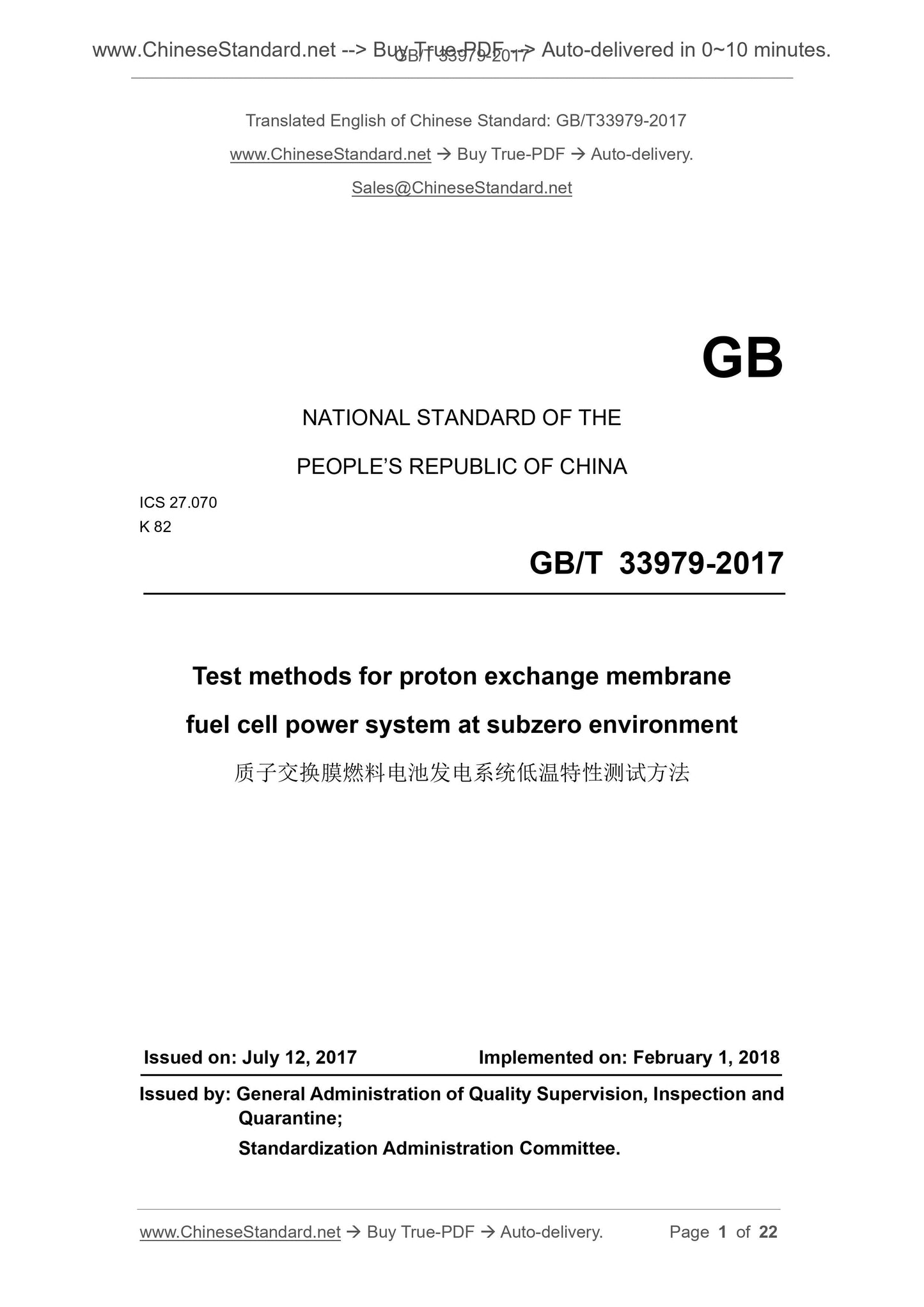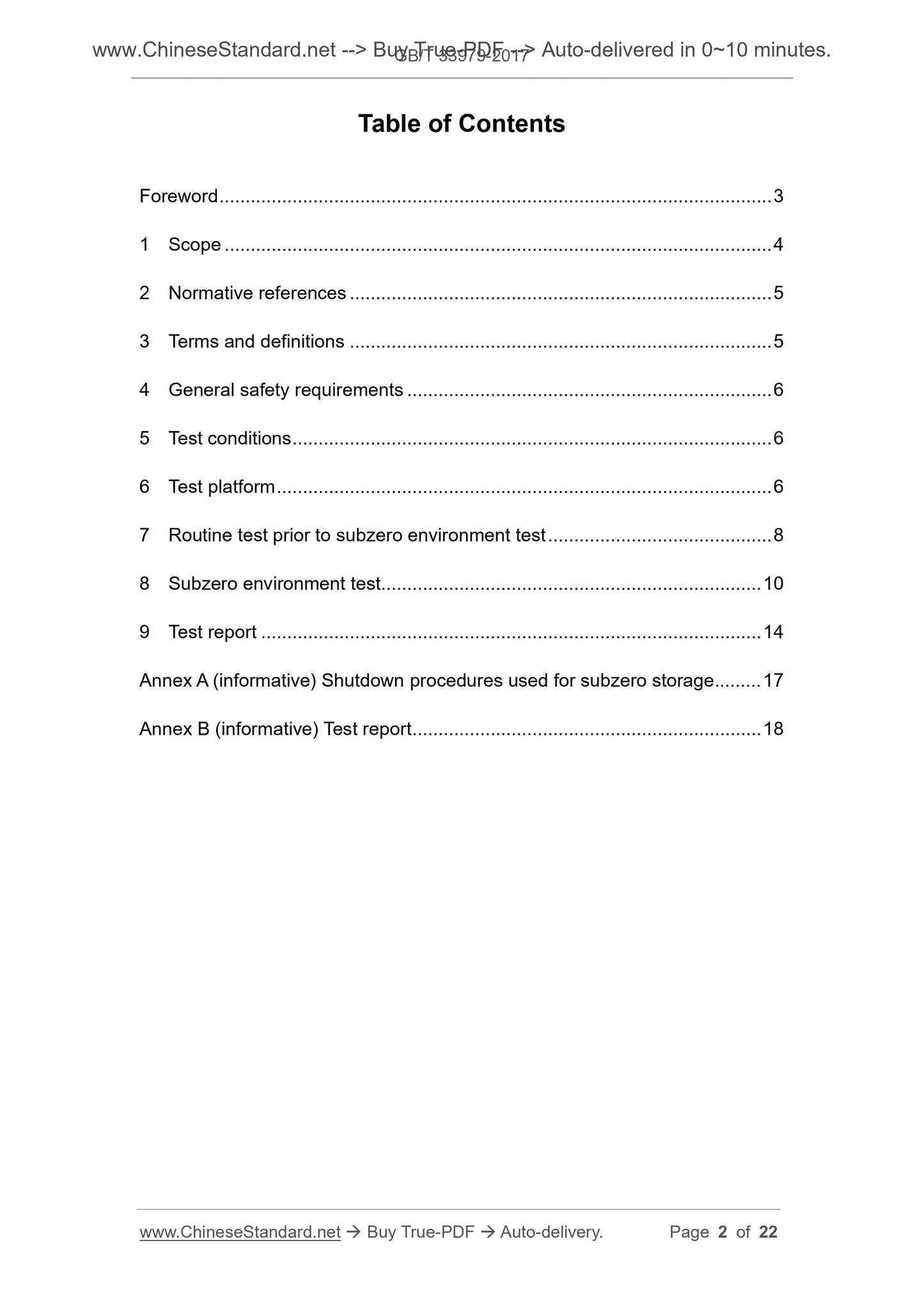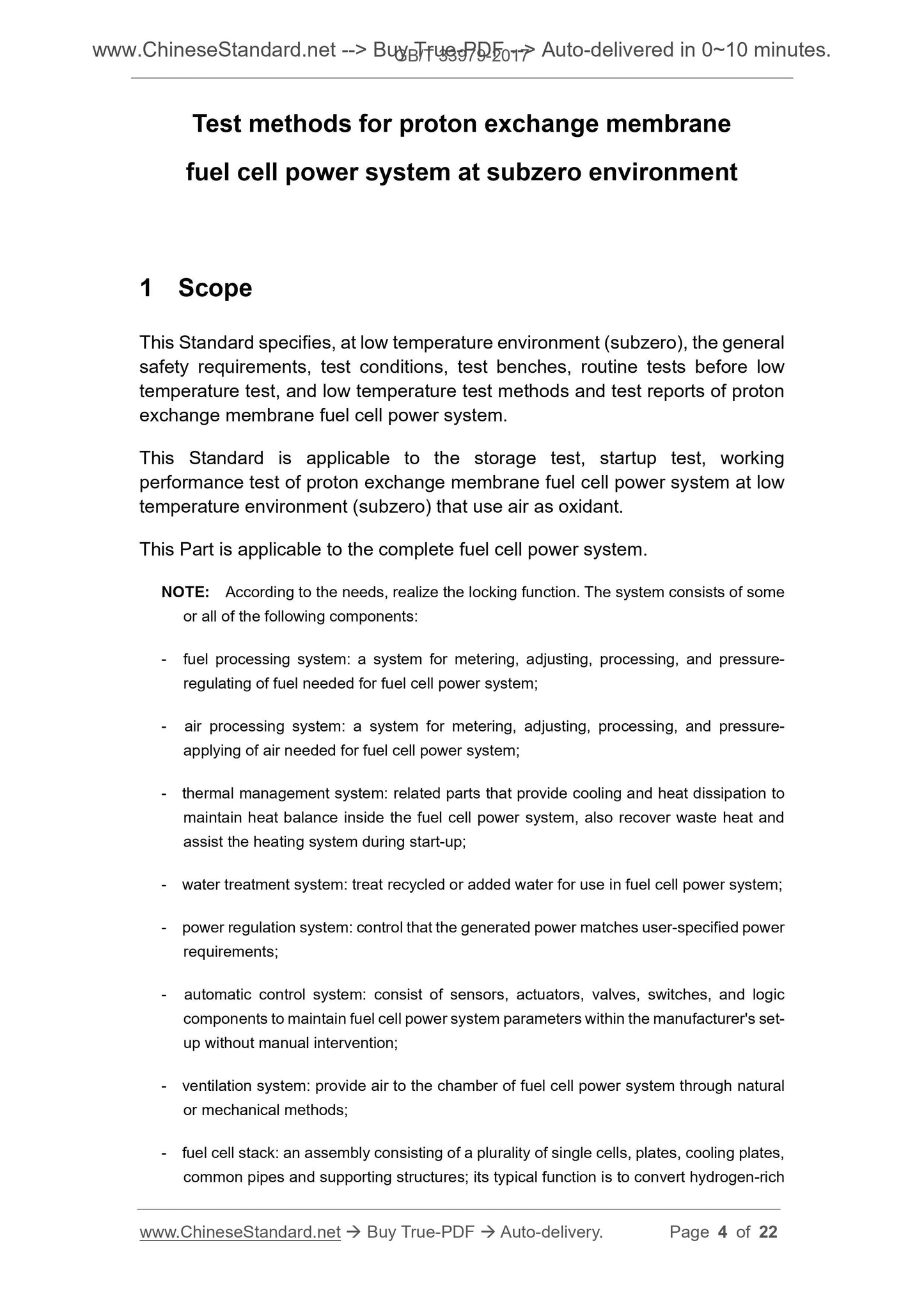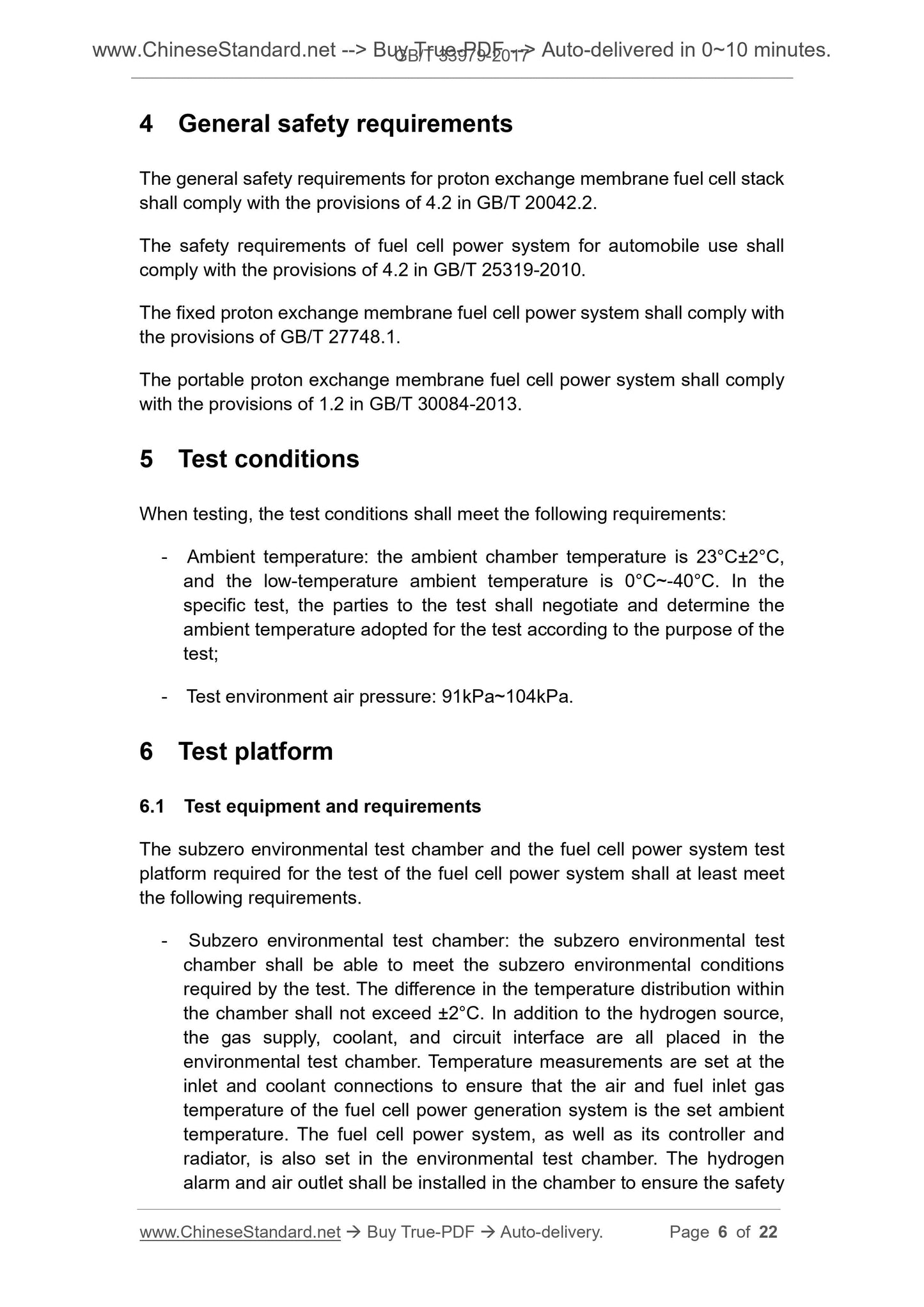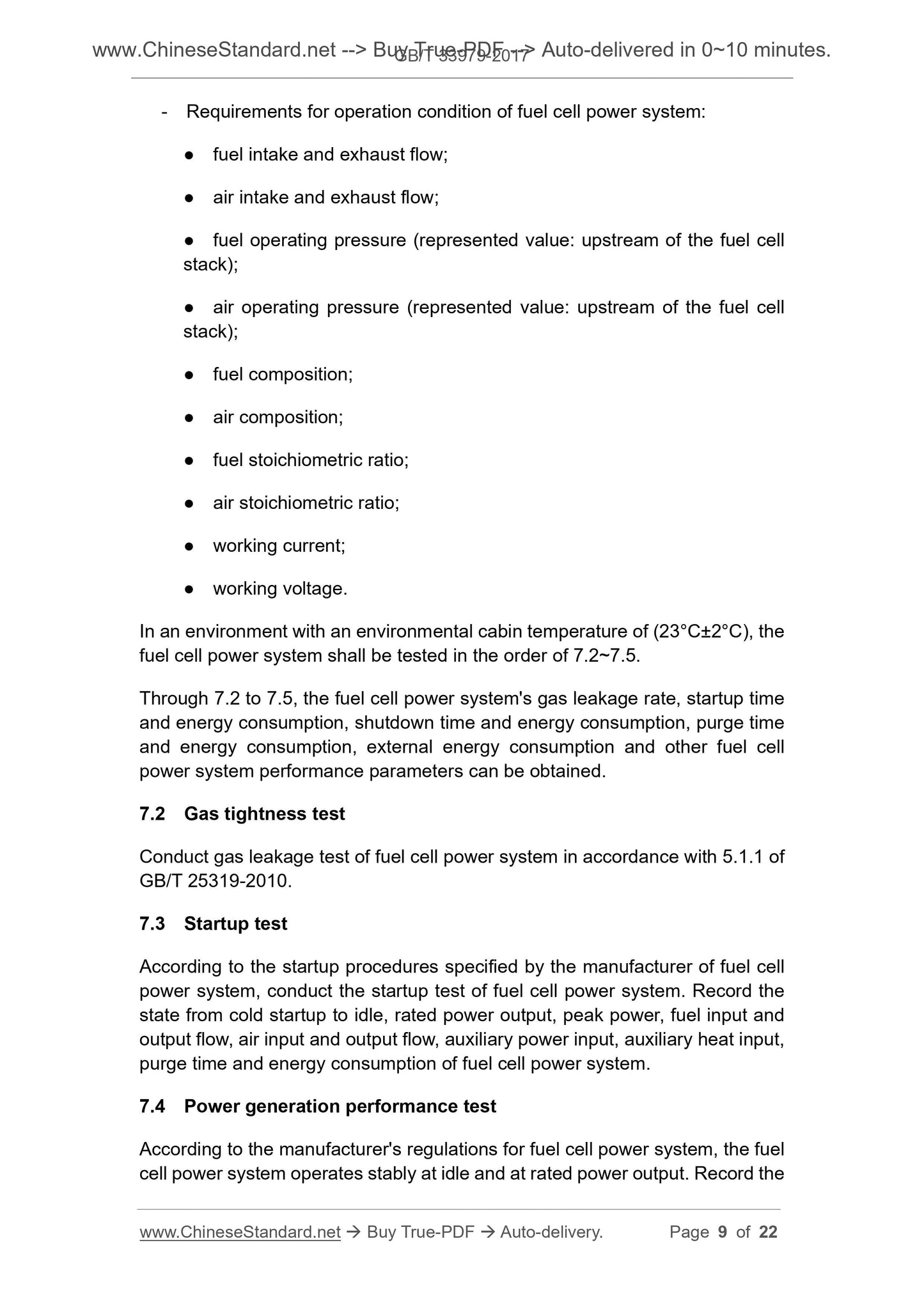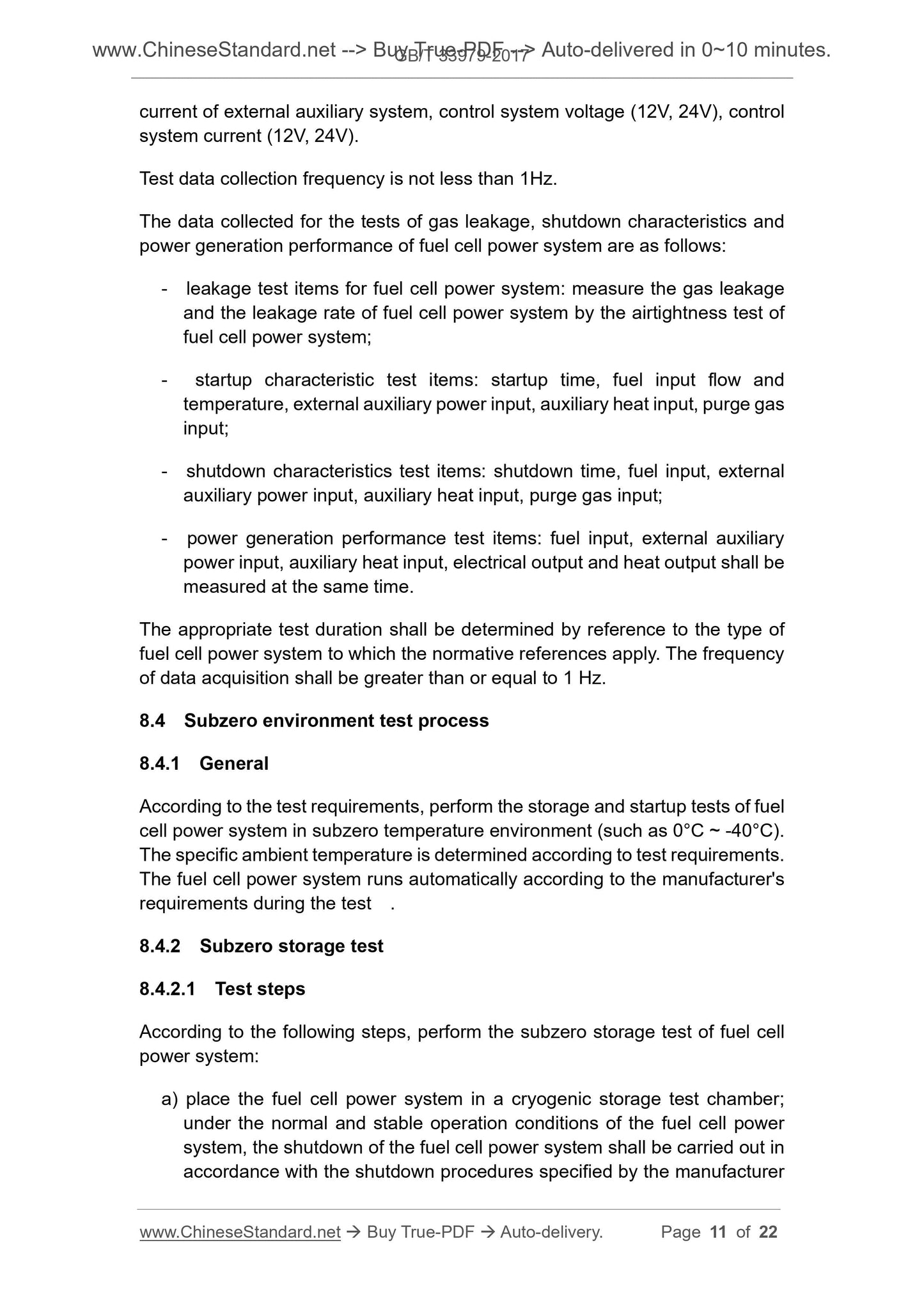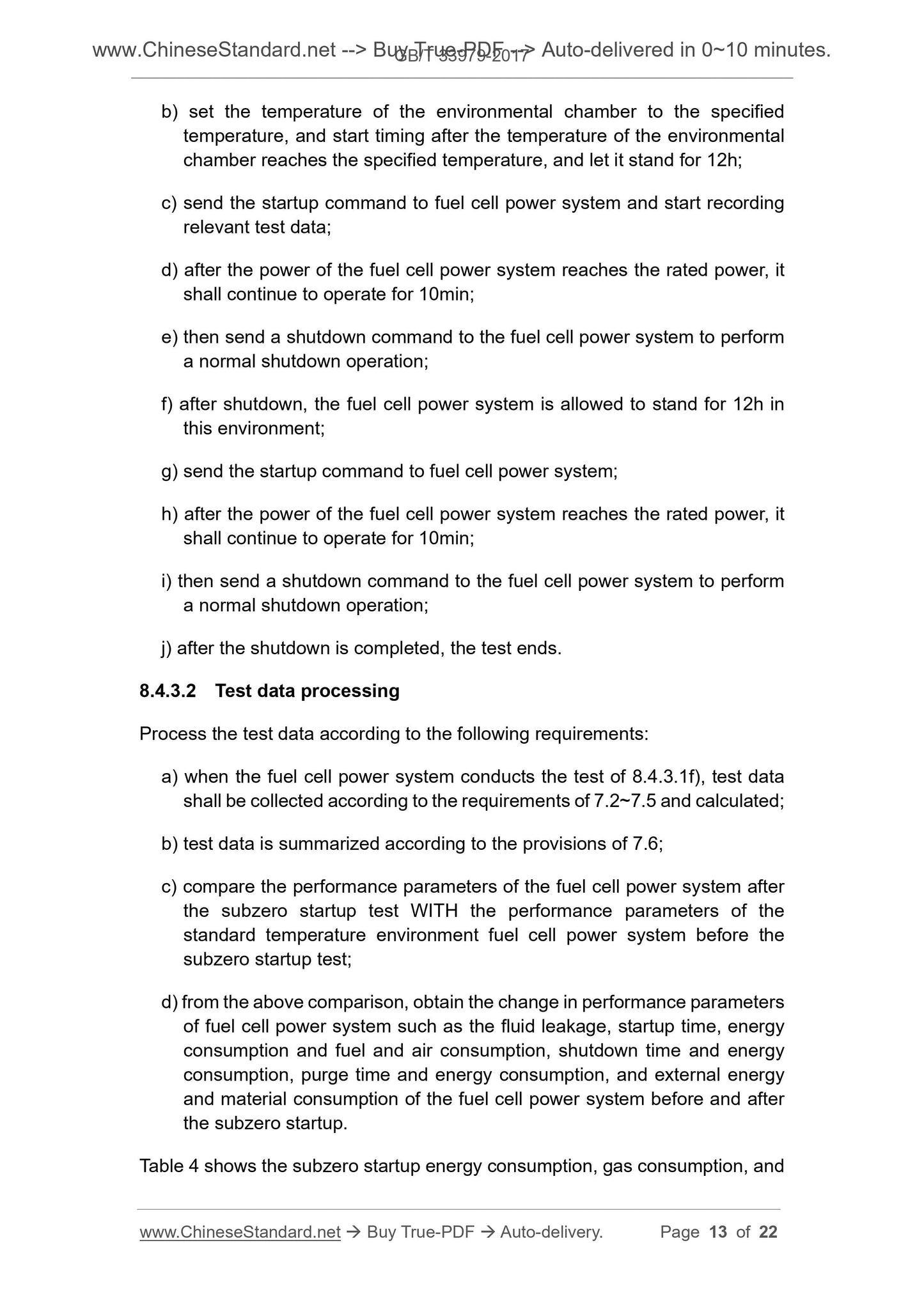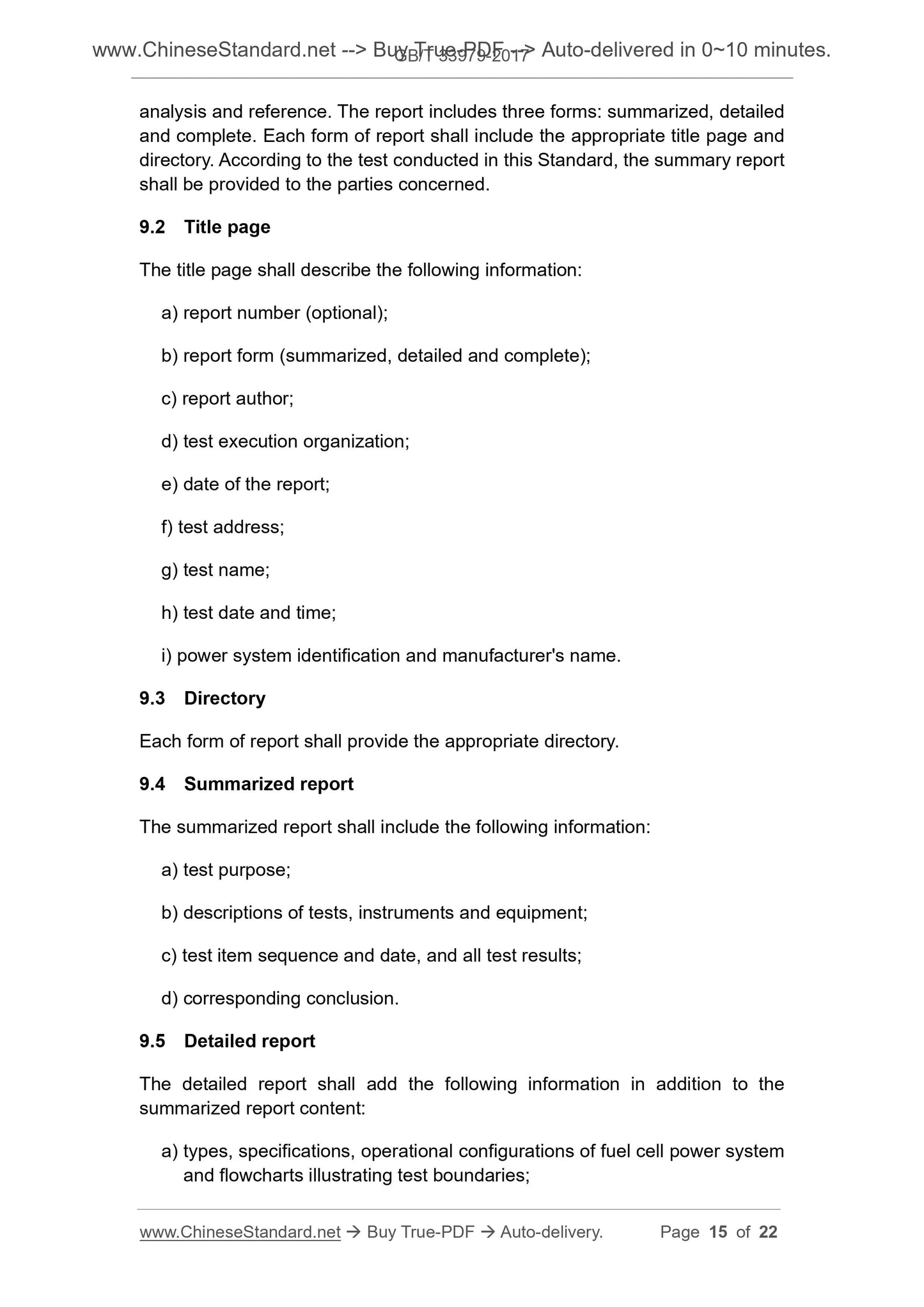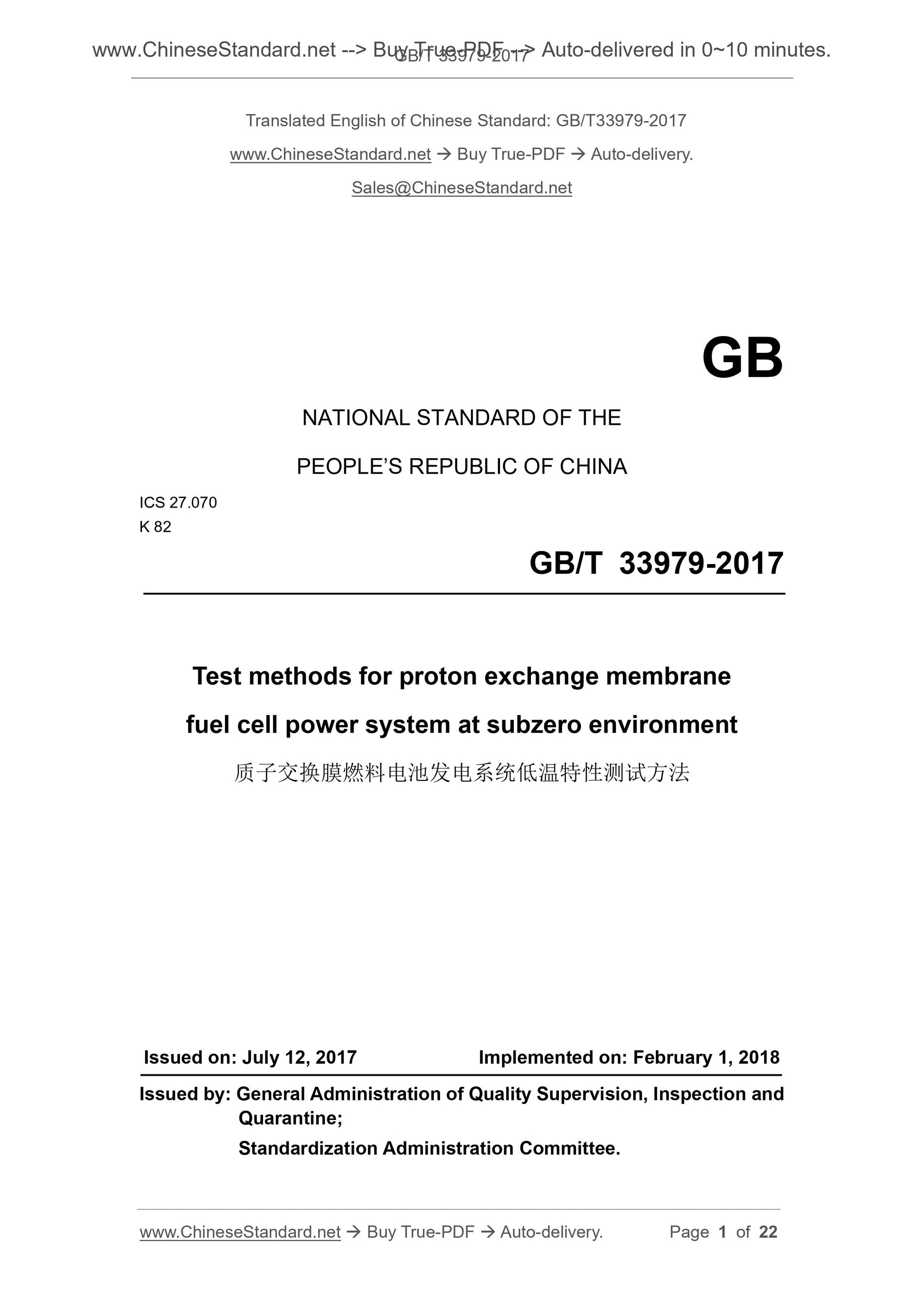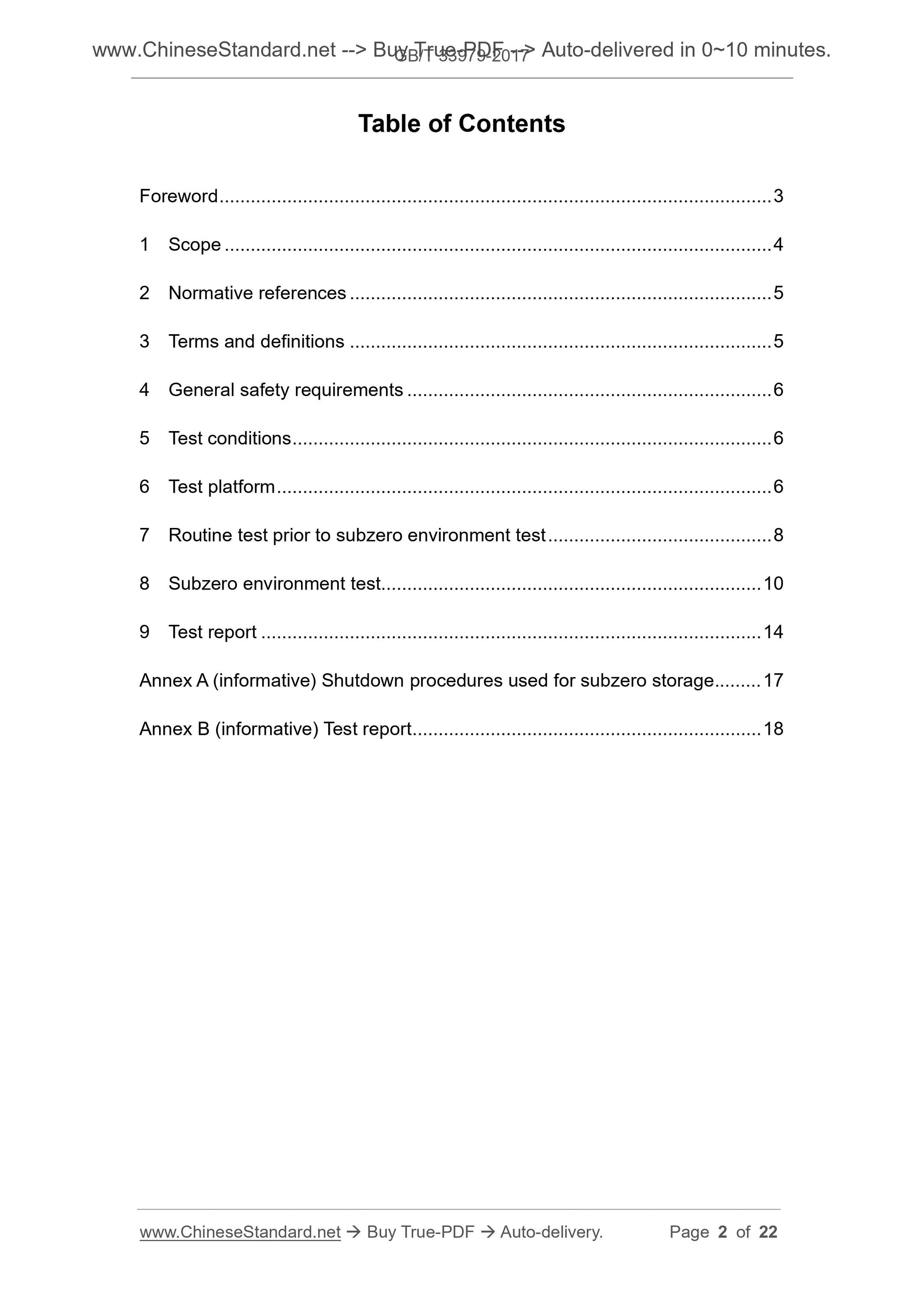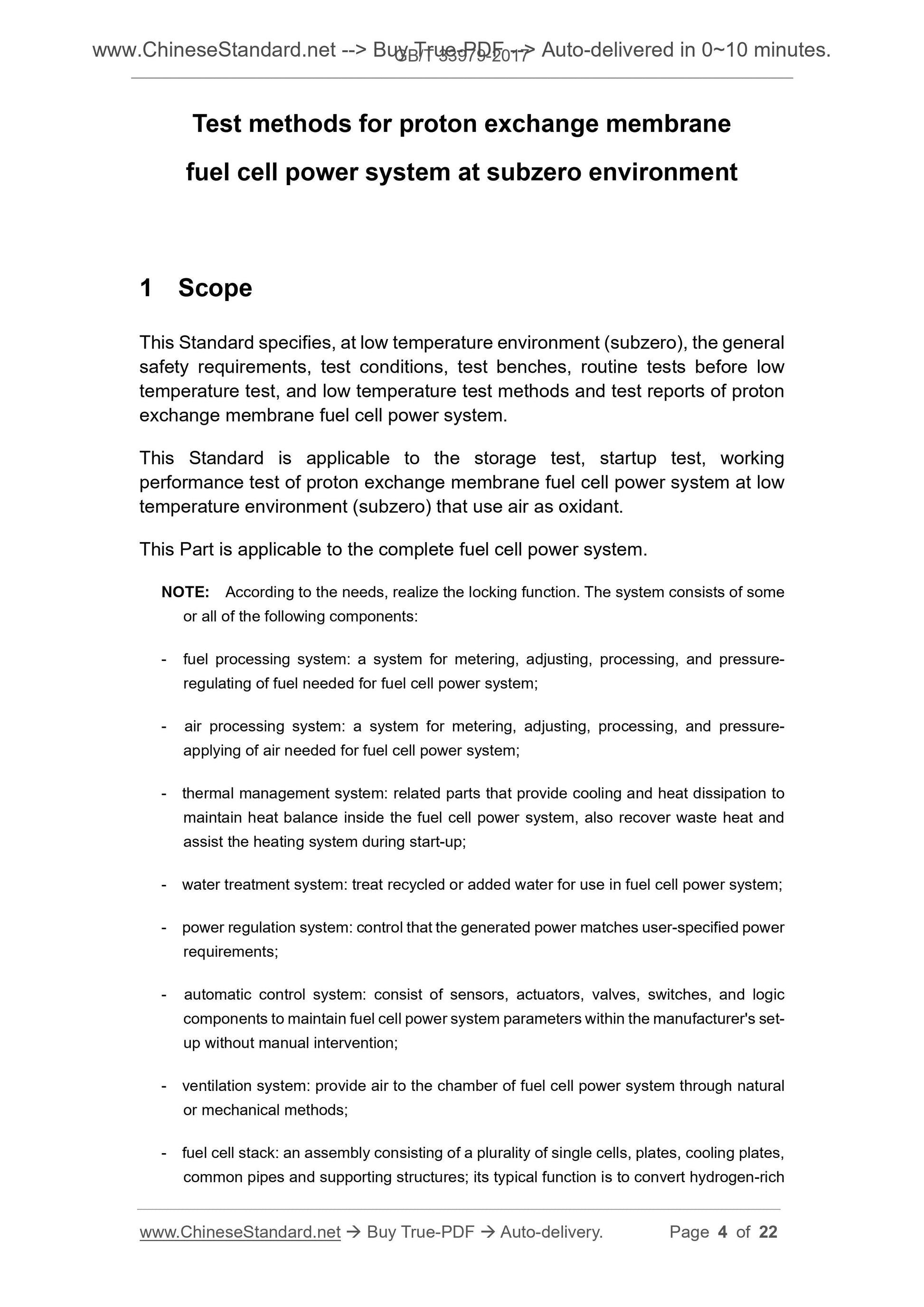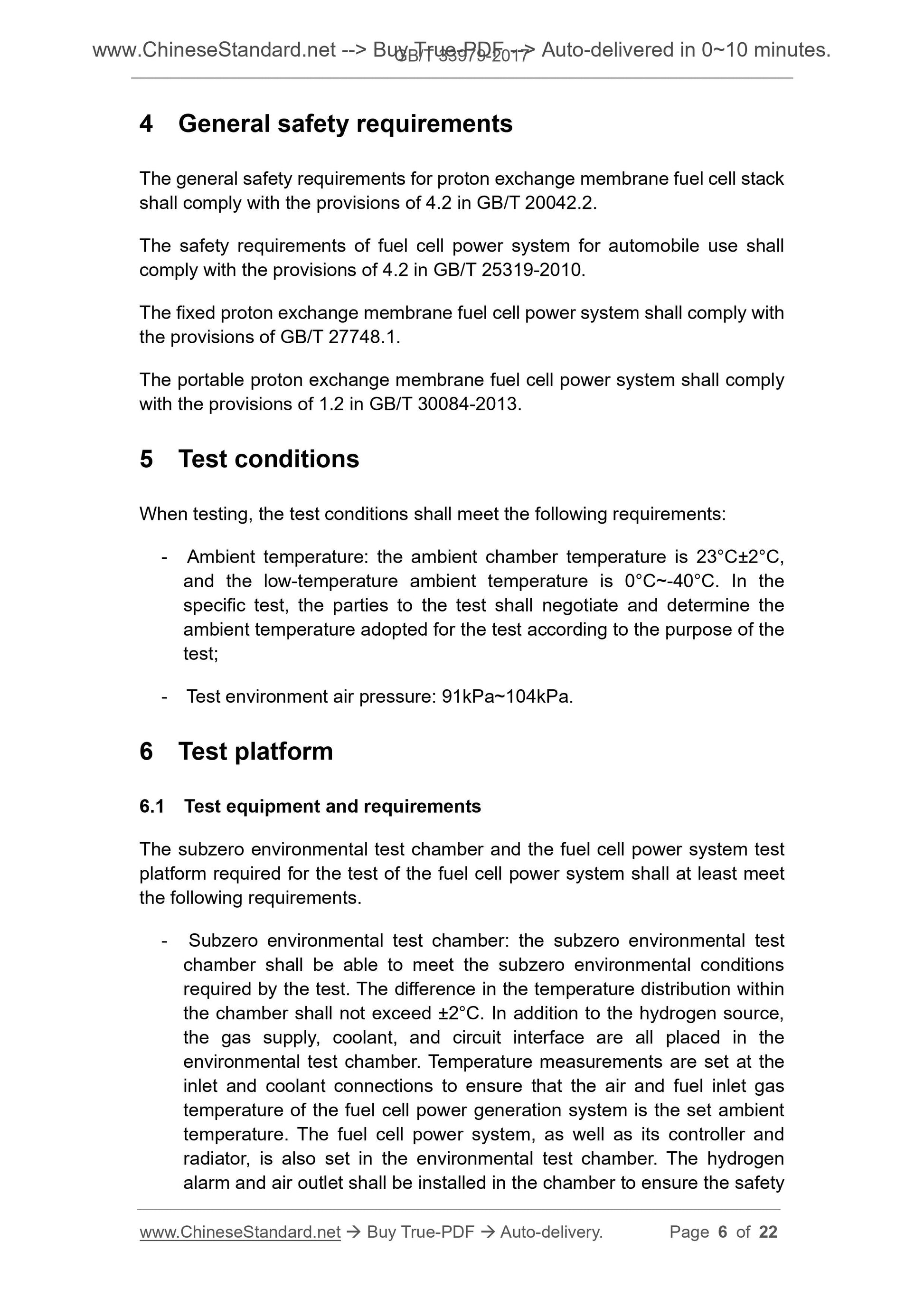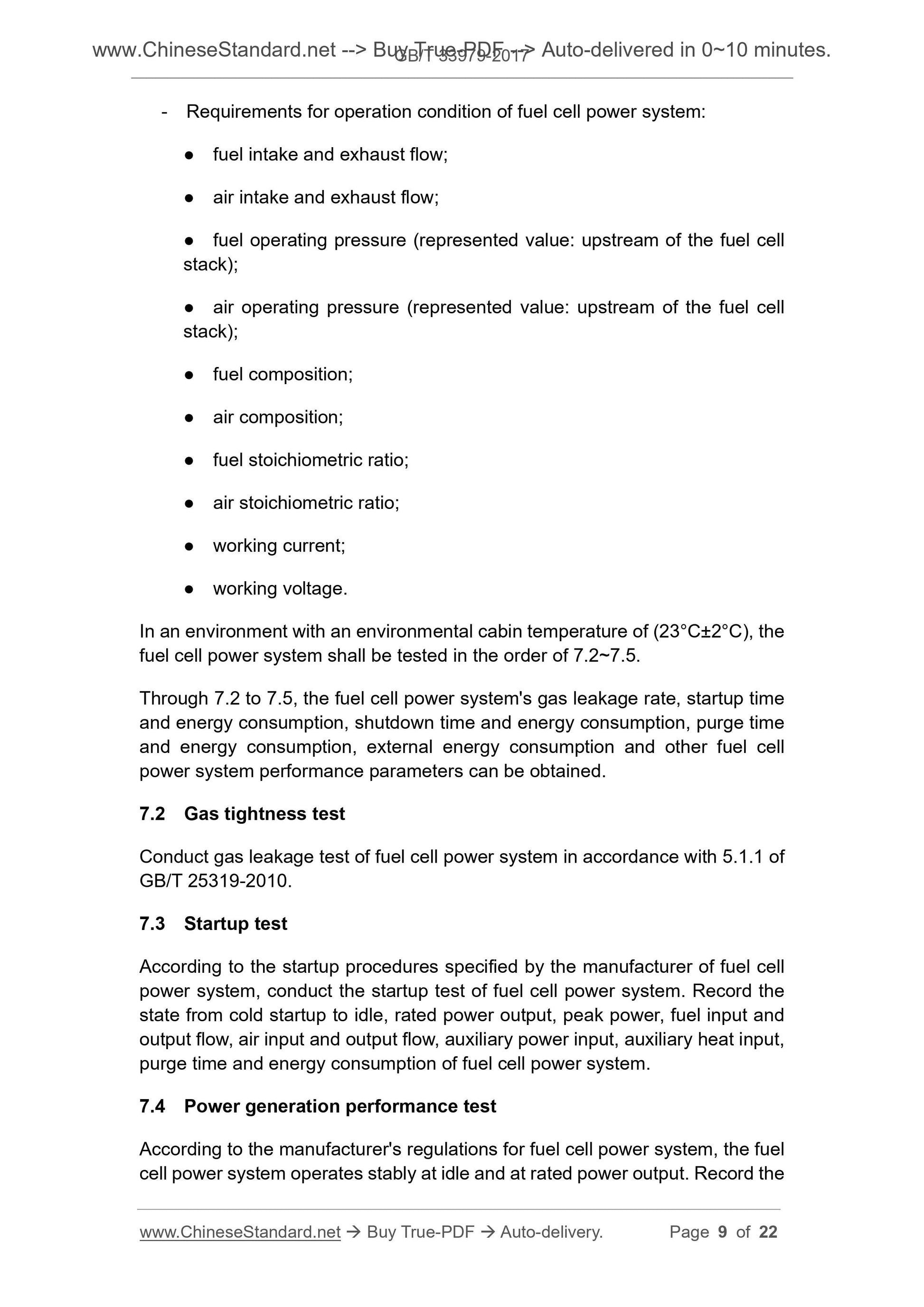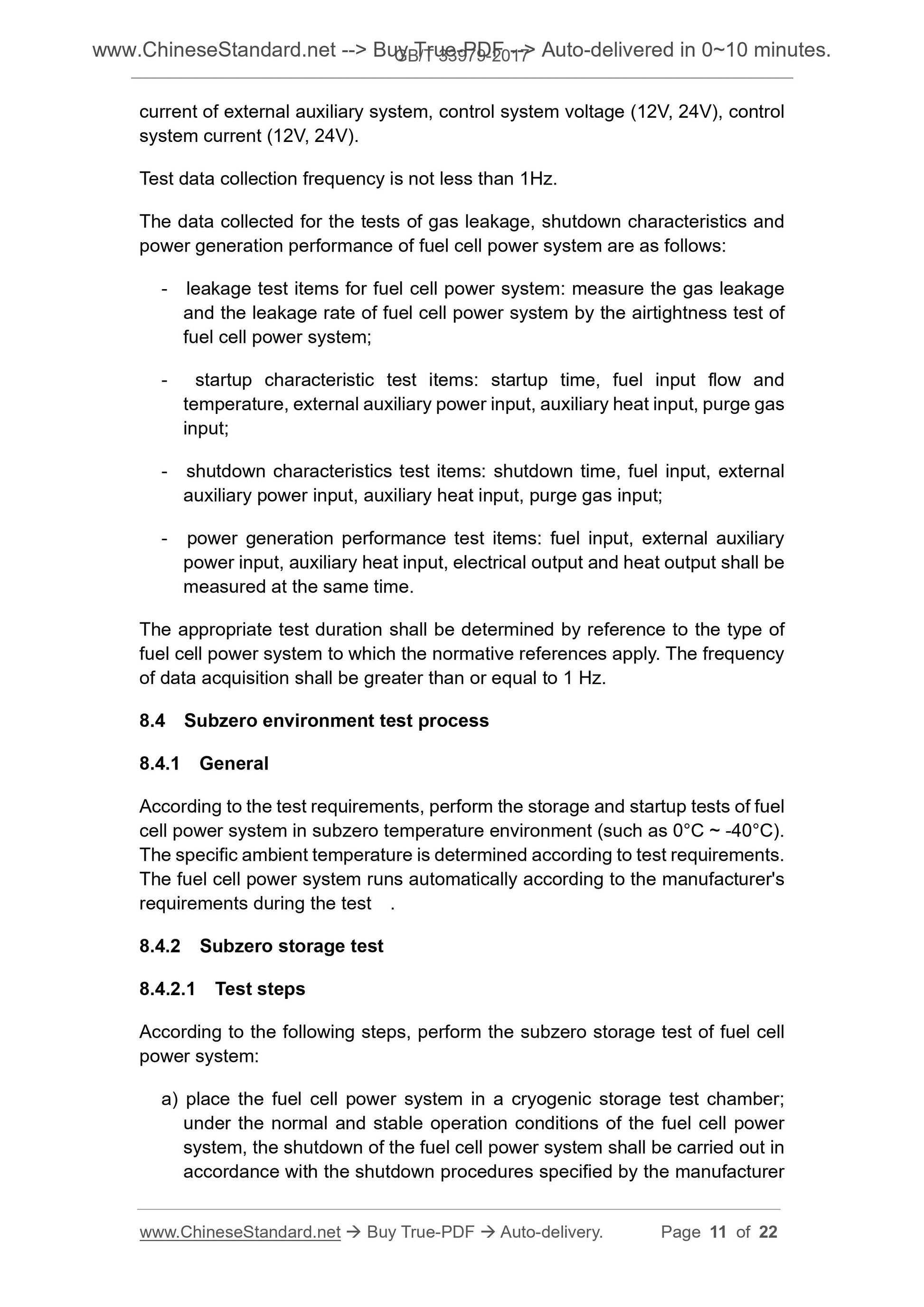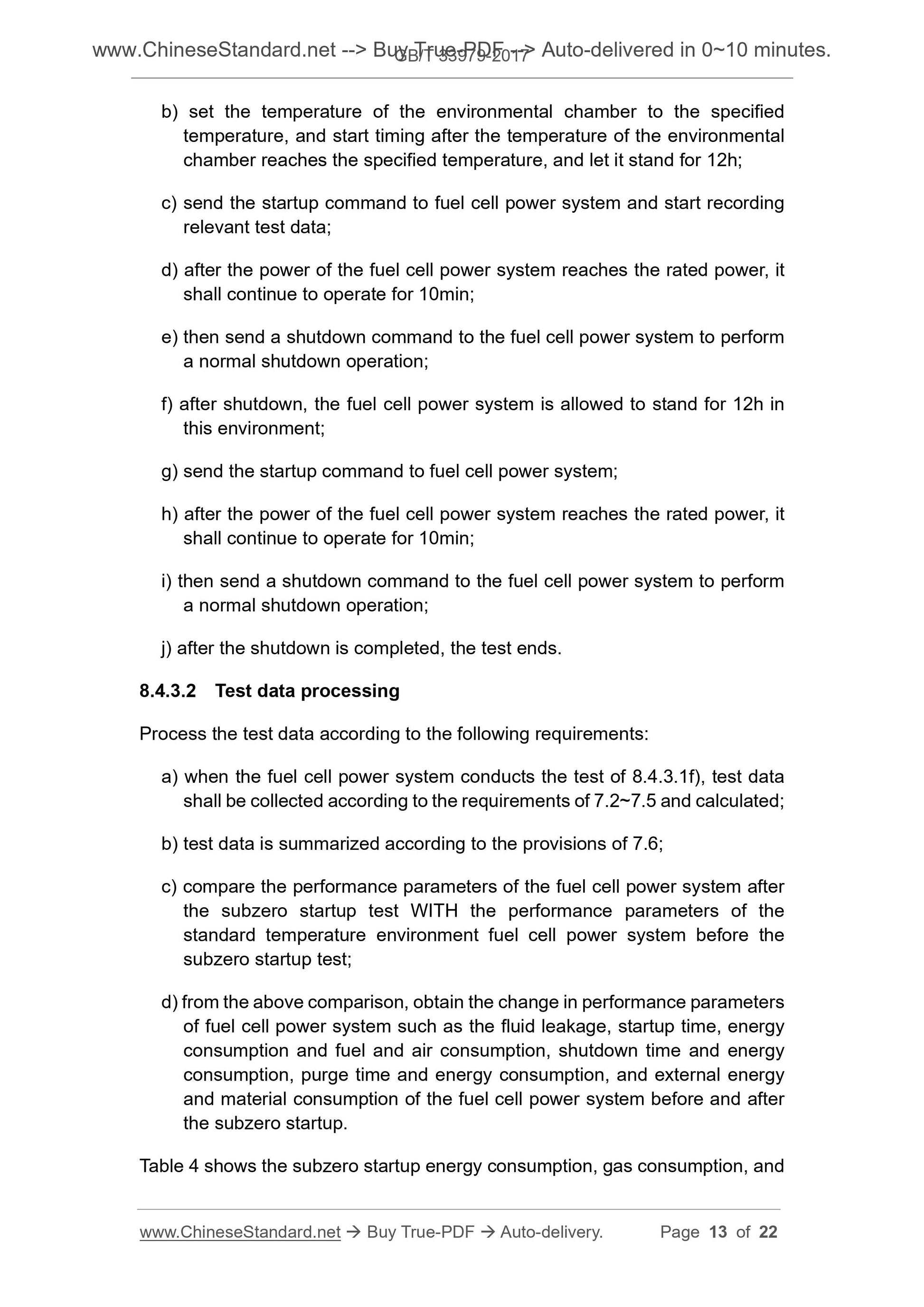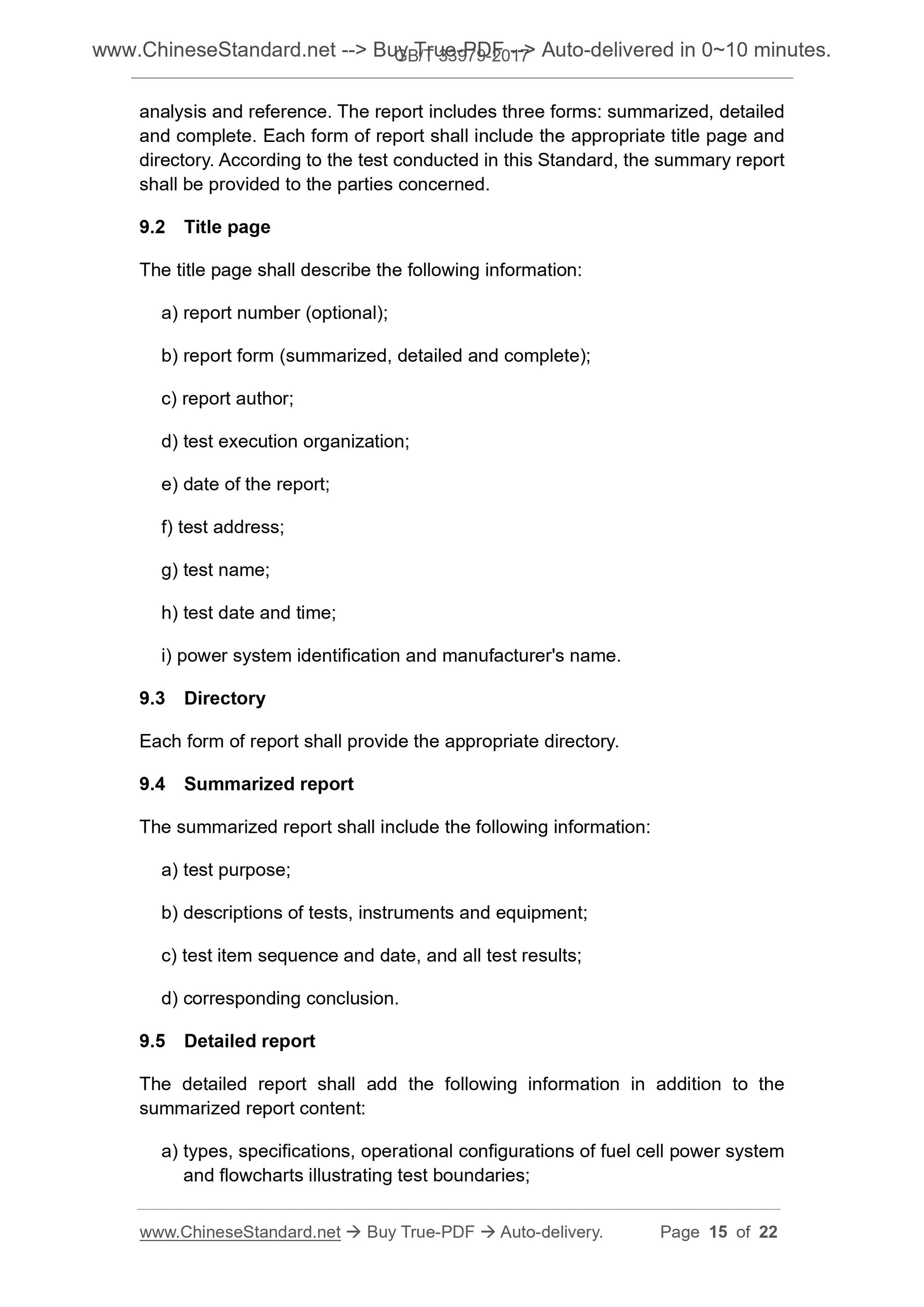1
/
of
8
www.ChineseStandard.us -- Field Test Asia Pte. Ltd.
GB/T 33979-2017 English PDF (GB/T33979-2017)
GB/T 33979-2017 English PDF (GB/T33979-2017)
Regular price
$205.00
Regular price
Sale price
$205.00
Unit price
/
per
Shipping calculated at checkout.
Couldn't load pickup availability
GB/T 33979-2017: Test methods for proton exchange membrane fuel cell power system at subzero environment
Delivery: 9 seconds. Download (and Email) true-PDF + Invoice.Get Quotation: Click GB/T 33979-2017 (Self-service in 1-minute)
Newer / historical versions: GB/T 33979-2017
Preview True-PDF
Scope
This Standard specifies, at low temperature environment (subzero), the generalsafety requirements, test conditions, test benches, routine tests before low
temperature test, and low temperature test methods and test reports of proton
exchange membrane fuel cell power system.
This Standard is applicable to the storage test, startup test, working
performance test of proton exchange membrane fuel cell power system at low
temperature environment (subzero) that use air as oxidant.
This Part is applicable to the complete fuel cell power system.
NOTE. According to the needs, realize the locking function. The system consists of some
or all of the following components.
- fuel processing system. a system for metering, adjusting, processing, and pressure-
regulating of fuel needed for fuel cell power system;
- air processing system. a system for metering, adjusting, processing, and pressure-
applying of air needed for fuel cell power system;
- thermal management system. related parts that provide cooling and heat dissipation to
maintain heat balance inside the fuel cell power system, also recover waste heat and
assist the heating system during start-up;
- water treatment system. treat recycled or added water for use in fuel cell power system;
- power regulation system. control that the generated power matches user-specified power
requirements;
- automatic control system. consist of sensors, actuators, valves, switches, and logic
components to maintain fuel cell power system parameters within the manufacturer's set-
up without manual intervention;
- ventilation system. provide air to the chamber of fuel cell power system through natural
or mechanical methods;
- fuel cell stack. an assembly consisting of a plurality of single cells, plates, cooling plates,
common pipes and supporting structures; its typical function is to convert hydrogen-rich
gases and air into direct current, heat, water, and other by-products through
electrochemical reactions;
- fuel cell module. consist of one or more fuel cell stacks, electrical coupling devices for
transmitting electrical energy from the stacks, and monitoring devices;
- built-in energy storage device. an energy storage device inside the system, used to help
or supplement the fuel cell module to supply internal or external loads.
Basic Data
| Standard ID | GB/T 33979-2017 (GB/T33979-2017) |
| Description (Translated English) | Test methods for proton exchange membrane fuel cell power system at subzero environment |
| Sector / Industry | National Standard (Recommended) |
| Classification of Chinese Standard | K82 |
| Classification of International Standard | 27.070 |
| Word Count Estimation | 18,173 |
| Date of Issue | 2017-07-12 |
| Date of Implementation | 2018-02-01 |
| Issuing agency(ies) | General Administration of Quality Supervision, Inspection and Quarantine of the People's Republic of China, Standardization Administration of the People's Republic of China |
Share
